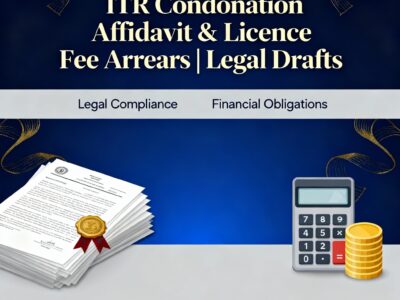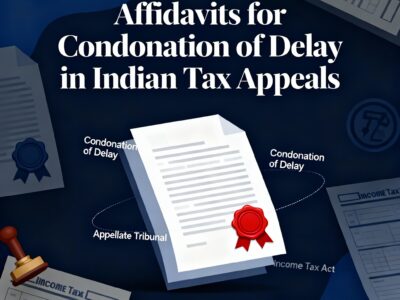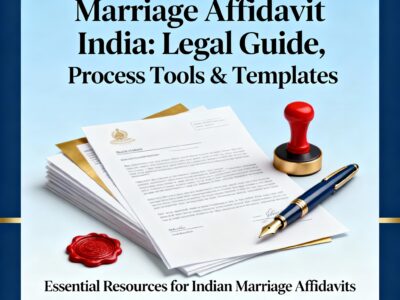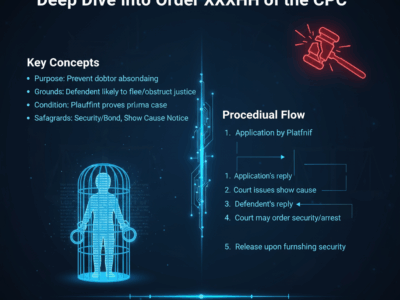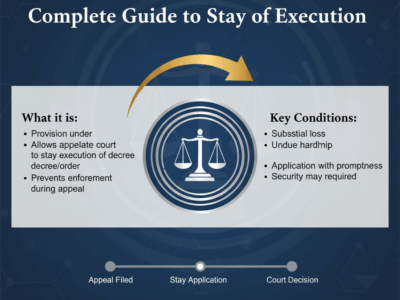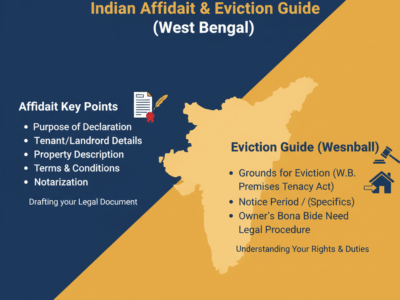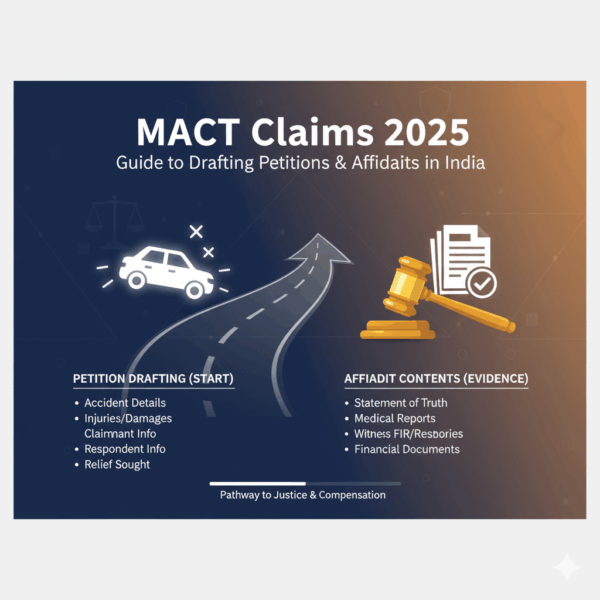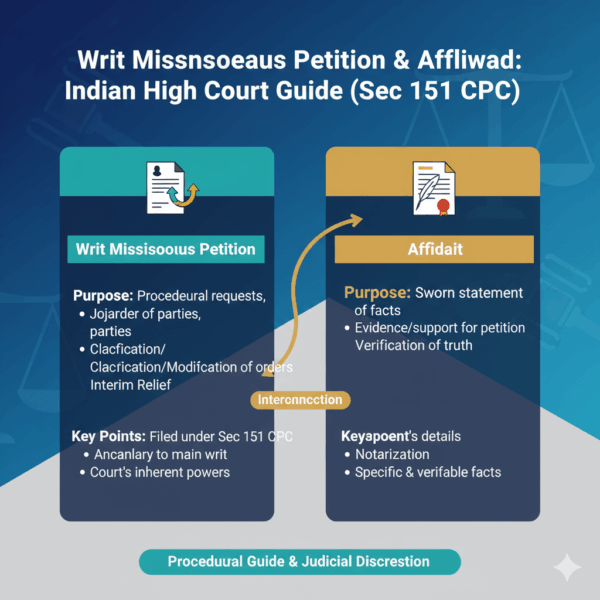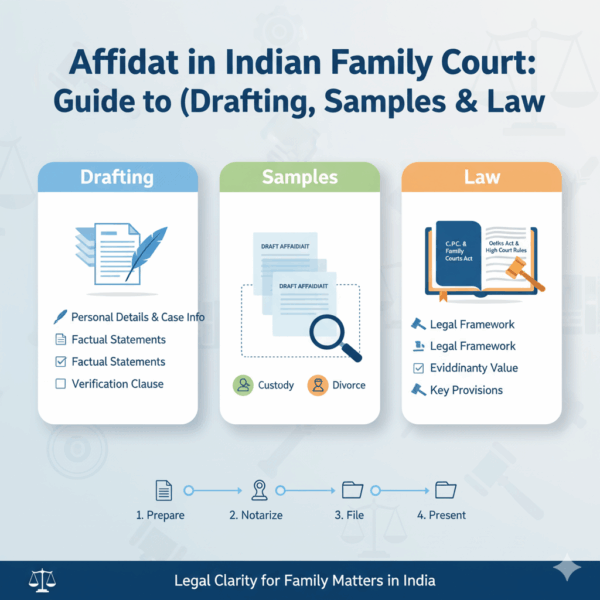Condonation of Delay in India: Mastering Sec 5 Limitation Act & Sec 151 CPC [Templates & Strategy]
Missing a deadline in litigation can feel like a fatal blow, but Indian law provides a crucial remedy: the condonation of delay. This power, primarily rooted in Section 5 of the Limitation Act, 1963, and supplemented by the inherent powers of the court under Section 151 of the Code of Civil Procedure (CPC), allows courts to prioritize substantial justice over procedural technicalities. However, succeeding in a condonation application hinges entirely on proving “sufficient cause”—a term deliberately left undefined to allow for judicial discretion.
This comprehensive guide, updated for 2025, demystifies the entire process. We will delve into the legal framework, analyze landmark judgments that define ‘sufficient cause,’ provide annotated templates for drafting your application and affidavit, outline the complete procedure, and even equip you with strategies to effectively oppose a condonation plea.
A Deep Dive into Condonation of Delay
An exhaustive guide to Section 5 of the Limitation Act and Section 151 of the CPC, with practical templates and strategic insights. Updated till October 2025.
The Balancing Act of Justice
Procedural Discipline
Strict timelines ensure litigation concludes, preventing endless legal battles. The law helps the vigilant.
Substantive Justice
Meritorious cases shouldn't be dismissed on technicalities. Justice must prevail over procedure.
Section 5 & 151 are the legal tools that empower courts to balance these principles, ensuring fairness prevails.
Section I: Deconstructing the Legal Framework
The foundation of civil litigation rests on both rights and rules. A petition to condone delay, using Section 5 of the Limitation Act and Section 151 of the CPC, is where courts balance the need for procedural deadlines with the imperative of delivering justice.
A. Section 5, Limitation Act, 1963: The Doctrine of Condonation
This provision allows courts to extend deadlines if the applicant shows "sufficient cause" for the delay, ensuring procedural rules serve justice, not hinder it.
Applicable To:
- Appeals
- Applications (excluding Order XXI)
- Revisions and Reviews
Not Applicable To:
- Institution of Suits
- Execution Applications (Order XXI)
- Applications under special statutes with express exclusion
B. Section 151, CPC, 1908: The Court's Inherent Powers
This section recognizes a court's inherent power to make orders necessary for justice or to prevent abuse of its process. It's a "safety valve" for situations not covered by specific rules.
C. Synergistic Invocation: Why Plead Both?
Invoking both sections is a strategic move. Section 5 provides the specific power to condone delay, while Section 151 frames the request within the court's overarching duty to ensure justice. It transforms the plea from a procedural request into a fundamental appeal for fairness.
D. Section 5 vs. Other Provisions: A Comparative Look
| Provision | Purpose | Key Difference |
|---|---|---|
| Sec. 5, Limitation Act | Condonation of delay after expiry of limitation. | Discretionary; requires "sufficient cause". |
| Sec. 14, Limitation Act | Exclusion of time spent in bona fide proceedings in a court without jurisdiction. | Exclusion is a matter of right if conditions are met, not discretionary. |
| Order XXII Rule 9, CPC | Setting aside abatement of a suit. | Specific to abatement; requires sufficient cause for not continuing the suit. |
Section II: The Doctrine of "Sufficient Cause"
The entire case for condonation rests on this term. The law doesn't define it, giving courts the flexibility to interpret it based on the facts of each case, guided by the principle of advancing "substantial justice."
Common Grounds for Condonation & Their Acceptance Rate
*Illustrative data based on judicial trends. Actual outcomes depend on case specifics.
Landmark Judgments: A Comparative View
| Case Name & Citation | Key Principle/Ratio Decidendi | Relevance to Practitioners |
|---|---|---|
| Collector, Land Acquisition, Anantnag v. Mst. Katiji, AIR 1987 SC 1353 | Established the principle of liberal and pragmatic construction. Substantial justice must be preferred over technical considerations. | Foundational authority to argue for a justice-oriented approach. |
| N. Balakrishnan v. M. Krishnamurthy, (1998) 7 SCC 123 | The acceptability of the explanation is the sole criterion, not the length of the delay. Negligence of counsel can be "sufficient cause." | Crucial for cases where delay is due to an advocate's mistake. |
| Ram Nath Sao v. Gobardhan Sao, AIR 2002 SC 1201 | The court must strike a balance between the rights of both parties. The right accrued to the respondent by lapse of time should not be disturbed lightly. | Useful for framing arguments that acknowledge respondent's rights but show greater injustice to the applicant. |
| State of Nagaland v. Lipok AO, (2005) 3 SCC 752 | Reiterated that the length of the delay is not the determinative factor. A long delay with a good explanation can be condoned. | Reinforces focus on the quality of the explanation, not just the duration. |
The 'Insufficient Cause' Doctrine: What Courts Reject
While the approach is liberal, courts will not condone delay caused by negligence, want of bona fides, or inaction. Some common grounds that are often rejected include:
Culpable Negligence
Indifference or inaction where a reasonable person would have acted. Forgetting the deadline is not a sufficient cause.
Mistake of Law
Generally, ignorance of the law is not an excuse. A clear misreading of a limitation provision is unlikely to be condoned.
Lack of Diligence
Failure to take necessary steps, such as applying for certified copies promptly or contacting counsel regularly.
Vague Explanations
General statements like "was busy with personal work" without specifics or proof are usually insufficient.
Section III: A Comprehensive Guide to Drafting the Petition and Affidavit
A well-drafted application can make all the difference. This section provides a step-by-step guide and annotated templates to help you craft a clear, concise, and compelling plea.
Annotated Template: Interlocutory Application
IN THE HIGH COURT OF JUDICATURE AT [Your High Court]
CIVIL APPELLATE JURISDICTION
I.A. NO. ______ OF 2024
IN
FIRST APPEAL (ST.) NO. ______ OF 2024
IN THE MATTER OF:
[Name of Appellant] ...APPELLANT/APPLICANT
VERSUS
[Name of Respondent] ...RESPONDENT
APPLICATION UNDER SECTION 5 OF THE LIMITATION ACT, 1963 READ WITH
SECTION 151 OF THE CODE OF CIVIL PROCEDURE, 1908 ON BEHALF OF THE
APPELLANT FOR CONDONATION OF DELAY IN FILING THE ACCOMPANYING FIRST APPEAL
MOST RESPECTFULLY SHOWETH:
1. That the Appellant has filed the accompanying First Appeal against the impugned judgment and decree dated [Date] passed by the Ld. [Name of Lower Court] in Civil Suit No. [Number].
-- Clearly identify the order being appealed against.
2. That the certified copy of the said judgment was received on [Date]. The prescribed period of limitation expired on [Date].
-- Establish the timeline for calculating the delay.
3. That the accompanying appeal has been filed on [Date]. Accordingly, there has been a delay of [X] days.
-- State the period of delay precisely.
4. That the delay was caused due to the following bona fide reasons:
(a) [Provide a detailed, chronological, and credible narrative of the reasons for the delay. Be specific.]
(b) [For example: That the Appellant's mother suffered a severe cardiac ailment from [Date] to [Date]. A copy of the medical records is annexed as Annexure A-1.]
-- This is the heart of the application. Support with evidence.
5. That the delay was neither intentional nor deliberate but was solely due to the aforesaid compelling reasons beyond the Appellant's control.
-- Mandatory statement of bona fides.
6. That the Appellant has a strong prima facie case on merits, and if the delay is not condoned, the Appellant will suffer irreparable loss.
-- Briefly touch upon the merits to show the appeal is not frivolous.
PRAYER
It is most respectfully prayed that this Hon'ble Court may be pleased to:
(a) Condone the delay of [X] days in filing the accompanying First Appeal;
(b) Take the accompanying First Appeal on record;
(c) Pass such other order(s) as this Hon'ble Court may deem fit.
APPELLANT
THROUGH
[ADVOCATE'S NAME]
Place:
Date:
Annotated Template: Supporting Affidavit
[Cause Title as above]
AFFIDAVIT IN SUPPORT OF THE APPLICATION FOR CONDONATION OF DELAY
I, [Name of Appellant], son of [Father's Name], aged about [X] years, resident of [Full Address], do hereby solemnly affirm and state on oath as under:
1. That I am the Appellant in the above-noted matter and am competent to swear this affidavit.
-- Establishes deponent's identity and competence.
2. That the contents of the accompanying application have been drafted under my instructions, and the facts stated in paragraphs 1 to 6 are true and correct to my knowledge. The contents may be read as part of this affidavit.
-- Incorporates facts from the application by reference.
3. That I reiterate that the delay of [X] days in filing the appeal was caused due to [Briefly restate core reason]. The delay was entirely unintentional and unavoidable.
-- First-person affirmation of the core reason.
DEPONENT
VERIFICATION
Verified at [Place] on this [Date], that the contents of the above affidavit are true and correct to my knowledge and belief.
DEPONENT
(Solemnly affirmed before a Notary Public / Oath Commissioner)
-- Mandatory attestation by an authorized official.
Special Case: The Advocate's Affidavit
When the delay is attributable to the counsel (e.g., illness, misplacement of file, bona fide mistake), it is ethically imperative and strategically wise for the advocate to file a personal affidavit. This lends immense credibility to the application and shows transparency before the court. The client should not be made to suffer for the counsel's error.
Do's and Don'ts of Drafting
DO
- ✓Be Chronological: Present facts day-by-day to explain the entire period of delay.
- ✓Be Honest & Transparent: Acknowledge the delay and present truthful reasons. Candor builds credibility.
- ✓Annex Evidence: Support every claim with documentary proof (medical certificates, travel tickets, etc.).
DON'T
- ✗Be Vague or Ambiguous: Avoid generic phrases. "Due to personal reasons" is a red flag for the court.
- ✗Conceal Facts: Hiding any part of the story can lead to dismissal if discovered.
- ✗Blame the System: Criticizing court procedures or administrative staff is counterproductive.
Section IV: Procedural Formalities and Strategic Considerations
Navigating the court registry and preparing for arguments are as crucial as drafting. This section covers filing, fees, and strategy.
Lifecycle of a Condonation Application
Indicative Schedule of Stamp Duty and Court Fees
| State/Union Territory | Stamp Duty for Affidavit (Non-Judicial) | Court Fee for Misc. Application |
|---|---|---|
| Delhi | Rs. 10 | Varies, approx. Rs. 5 |
| Maharashtra | Rs. 100 | Approx. Rs. 25 |
| Uttar Pradesh | Rs. 20 | Approx. Rs. 2 |
| Punjab & Haryana | Rs. 15 (Punjab) | High Court: Rs. 2.65 |
| Rajasthan | Rs. 10 | Approx. Rs. 4 |
*Disclaimer: Values are indicative. Always verify with current State Acts and High Court Rules before filing.
The Hearing: Arguing the Application
- Know Your Facts Cold: Be prepared to answer any question about the timeline of the delay without hesitation.
- Address the Merits Briefly: Without arguing the full appeal, gently guide the court to the strength of your case to show that the appeal is not frivolous.
- Distinguish Negative Precedents: Be aware of judgments that may go against you and be ready to distinguish them on facts.
- Be Respectful & Deferential: The power to condone is discretionary. Your demeanor and respect for the court's time are crucial.
Section V: Opposing a Condonation Application - A Respondent's Guide
When limitation expires, a valuable right accrues to the respondent. This section outlines key strategies and arguments to effectively oppose an application for condonation of delay.
Key Grounds for Opposition
-
1. Emphasize the Vested Right
Argue that the expiry of the limitation period has created a vested legal right in your favor, which cannot be disturbed lightly. This shifts the burden heavily onto the applicant.
-
2. Expose Lack of Diligence
Scrutinize the applicant's affidavit for gaps in the timeline. Point out periods of inaction and argue that they demonstrate culpable negligence, not a "sufficient cause."
-
3. Challenge the 'Bona Fides'
If the applicant's explanation seems fabricated or is unsupported by evidence, directly challenge their good faith. Argue that the delay is a calculated attempt to prolong litigation.
-
4. Highlight Prejudice
Explain how the delay has prejudiced you. This could include the death of a key witness, loss of evidence, or the inability to enjoy the fruits of the decree.
-
5. Argue "Per Incuriam"
If the applicant relies on a judgment that has been overruled or is no longer good law, point this out to the court. An argument based on an incorrect legal premise is inherently weak.
Case Law for the Respondent
| Case Name & Citation | Key Principle for Respondents |
|---|---|
| Basawaraj v. Special Land Acquisition Officer, (2013) 14 SCC 81 | The law of limitation is based on public policy. The burden is on the applicant to prove sufficient cause and every day's delay must be explained. |
| P.K. Ramachandran v. State of Kerala, (1997) 7 SCC 556 | The court has no power to extend limitation on equitable grounds if sufficient cause is not shown. The law helps the vigilant, not the indolent. |
Section VII: Condonation of Delay under Special Statutes
The general principles of Section 5 do not apply universally. Many special laws that prescribe their own limitation periods either modify the power to condone delay or exclude it entirely. This is based on the legal maxim "generalia specialibus non derogant" (general things do not derogate from special things).
Applicability of Section 5: A Comparative Chart
| Statute | Relevant Provision | Can Delay Be Condoned? |
|---|---|---|
| Arbitration and Conciliation Act, 1996 | Sec. 34(3) - Setting aside an award | No. The proviso allows only a further period of 30 days, and no more. Section 5 is implicitly excluded. |
| Insolvency and Bankruptcy Code, 2016 | Sec. 61(2) - Appeal to NCLAT | Partially. The appellate tribunal can condone a delay of up to 15 days if sufficient cause is shown, but not beyond that. |
| Negotiable Instruments Act, 1881 | Sec. 142(b) - Filing of complaint | Yes. The proviso allows the court to take cognizance after the prescribed period if the complainant shows sufficient cause. |
| Consumer Protection Act, 2019 | Sec. 41 - Appeal to State Commission | Yes. The proviso allows an appeal to be entertained after 30 days if sufficient cause is shown. |
*Note: This is an illustrative list. Always check the specific statute for its limitation provisions.
Section VIII: Practical Guides & Modern Considerations
Beyond the statutes, practical know-how and recent developments are critical. This section addresses how to calculate delay and the landmark impact of the COVID-19 pandemic on limitation periods.
How to Accurately Calculate Delay: A Step-by-Step Guide
Identify Start Date
The period of limitation starts from the date of the judgment/order you are challenging.
Exclude Time for Copies
Exclude the time taken by the court to prepare and provide the certified copy of the order (as per Sec. 12 of the Limitation Act).
Calculate End Date
Calculate the last day of the limitation period. If this day is a court holiday, the deadline extends to the next working day.
The Supreme Court's COVID-19 Extension Orders
In response to the pandemic, the Supreme Court of India, in the case of In Re: Cognizance for Extension of Limitation, passed suo motu orders that significantly impacted limitation periods for all legal proceedings.
Key Takeaway
The period from 15th March 2020 to 28th February 2022 was excluded for the purposes of computing limitation. This means if your limitation period fell within this window, it was effectively paused. For any new limitation periods after this, a grace period of 90 days from 1st March 2022 was provided.
This is a critical consideration for any case where the cause of action or deadline fell within these dates.
Section IX: Frequently Asked Questions (FAQ)
Is there a maximum period of delay that can be condoned?
No. The law does not prescribe a maximum limit. The Supreme Court has held that the length of the delay is not the primary factor; the acceptability of the explanation is. A short delay with a bad explanation can be rejected, while a long delay with a good and sufficient cause can be condoned.
Can delay be condoned if the appeal has no merit?
It's a balancing act. While the condonation application is decided first, courts often take a peek at the merits. If the appeal is patently frivolous or bound to fail, the court will be less inclined to condone the delay. Conversely, a strong prima facie case can persuade a court to take a more liberal view of the delay.
What happens if my application is dismissed?
If the application under Section 5 is dismissed, the main appeal/application cannot be taken on record as it is time-barred. This effectively brings the litigation in that forum to an end. The remedy would be to challenge the order of dismissal before a higher judicial forum (e.g., an appeal or revision, as may be permissible).
Can the court impose costs while condoning delay?
Yes. Often, to balance the equities and compensate the respondent for the inconvenience caused by the delay, courts will condone the delay subject to the payment of costs. The amount of costs varies depending on the length of the delay, the conduct of the applicant, and the court's assessment of the situation.

